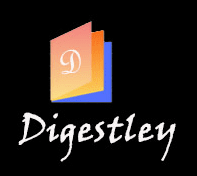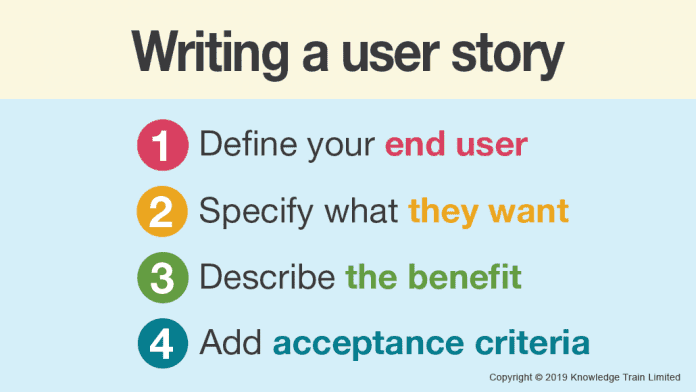Last Updated on February 10, 2025 by Bisma Sehar
Agile user stories are agile software development used to capture data about the business and functional requirements that a system must satisfy. User stories help teams and organizations determine what steps need to be performed by whom and in what order, while providing a framework for communication. The agile approach emphasizes working software as the measure of progress , which suggests that user story cards should be written from the point of view of the person who will use the application or website.
Table of Contents
The following writing guidelines should be considered when creating agile user stories:
· Write agile user stories from the persona’s point of view (use ‘I’).
· Use active voice whenever possible to create agile user story examples that come alive For example, instead of “As a user, I want to report a bug,” use “As a registered user, when I encounter a bug in the system, I want to be able to report it,” or instead of ” As an administrator , when there are too many simultaneous connections , I want configurable alerts,” use “When there are more than 25 simultaneous attempts from one IP address, send me an alert.” Keep agile user stories short.
Ideally agile user stories should be about 6-10 words long. You should think of agile user stories like headlines or tweet (micro blogging site) posts (140 characters).
Agile user story examples might look like:
· As an end-user , when I login to my account, I want to see a customizable home screen.
· As an administrator , when there are too many simultaneous connections, I want configurable alerts.
· When there are more than 25 simultaneous attempts from one IP address, send me an alert .
· When users try to access non-existent pages in this web site, I want them to see friendly 404 error pages .
There is some debate about agile user stories length (too long or too short). Some agile experts advocate agile user stories should not exceed 4-5 words; while others say they can be up to 30 words long. The agile techniques like agile manifesto prefer less text on story cards for faster communication between business and development teams during the daily stand-up meetings (the agile daily stand-up meeting is a short daily team meeting that takes up no more than 15 minutes).
In agile user stories, the business side you want to focus on the who and why . The agile developers prefer quick overview of what and how which can be provided by agile user stories between 3-5 words i.e., the agile story format should not exceed 5 words.
Figuring out a good balance between too much text and sketchy detail requires patience and experience. It may take a little time for everyone involved – Business users , analysts , agile developers – to figure out their preferred level of detailed information in each agile user story. As a general rule, agile user stories that are longer than 20 words probably contain too much information .
Why write agile user stories?
agile user stories are a good way to capture the wants and needs of users. Agile is all about delivering valuable software – sooner rather than later – and agile user stories enable this by being a lightweight description of what the system must do to be useful.
Agile user stories also allow agile teams to respond quickly to changing requirements , keep track of features that have been dropped, highlight areas where more effort is needed, etc.
but agile development experts advise not to use too much text in agile user stories so focus on what agile story format should not exceed 5 words . So when you write an agile story – e agile developers prefer a quick overview of what and how which can be done in the agile development marketplace .
The agile story format should be just enough to understand what an agile team needs to do next by an agile product owner or agile business analyst. Keywords are used which agile developers can choose from when they start writing their agile stories. For example, there are keywords like “as a user” , “I want to…” , “so that…” which you can use for specifying an agile story format . Some of these keywords may not work well for your project because they might already have other meanings in the team’s domain. So choose agile story format wisely based on context and priority.
Agile user stories help the whole team stay aligned with what DRY (Don’t Repeat Yourself) agile principle is about.
Before agile user stories were widely in use, agile developers had to rely on the agile product owner’s backlog for knowing what they need to work on next. But when there are multiple agile teams working with the same agile product owner or agile business analyst, this practice gives rise to information silos which make it difficult for agile team members to help each other whenever they face a problem because of misalignment between task prioritization and team’s capacity planning. This problem led people to think about improving workflow by writing agile user stories so that everyone in the agile team can look into them and figure out how their work fits into a bigger picture.
Agile user stories have agile product backlogs on which agile users, agile developers and agile testers collaborate together to land user stories on the top of the agile product backlog first.
The agile product owner prioritizes agile user stories according to their business value which is agreed upon by all members involved in agile project management. This ensures that higher priority agile user stories are always worked on first whenever there are no impediments blocking progress.
An agile user story contains all details about what needs to be built next depending on its priority level. It is a way of communicating, between agile users, who need an improvement or new functionality in the software system, and the agile team responsible for building that portion of it.
Apart from that if you want to know about Project management then please visit our Business category
















